ELAR 3.10
Author's purpose and craft: listening, speaking, reading, writing, and thinking using multiple texts. The student uses critical inquiry to analyze the authors' choices and how they influence and communicate meaning within a variety of texts. The student analyzes and applies author's craft purposefully in order to develop his or her own products and performances. The student is expected to:
- (1) explain the author's purpose and message within a
text;
- (A) explain how the use of text structure contributes to the author's purpose;
- (B) explain the author's use of print and graphic features to achieve specific purposes;
- (C) describe how the author's use of imagery, literal and figurative language such as simile, and sound devices such as onomatopoeia achieves specific purposes;
- (D) identify the use of literary devices, including first- or third-person point of view;
- (E) discuss how the author's use of language contributes to voice; and
- (F) identify and explain the use of hyperbole.
- Free Plan
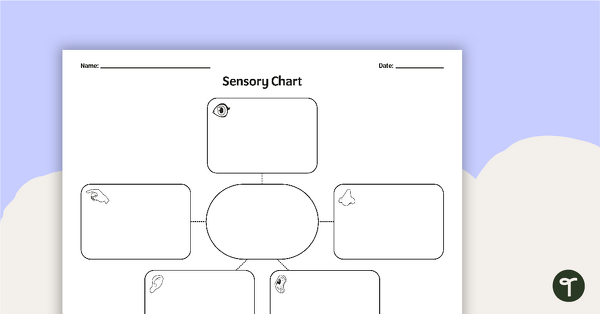
Sensory Chart Graphic Organizer
A graphic organizer for students to use when categorizing sensory details.
- Plus Plan
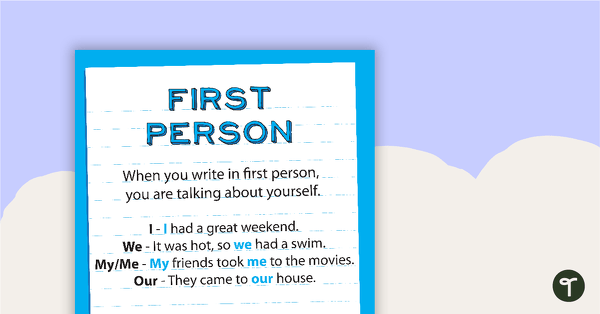
First, Second, and Third Person Narration Posters
A set of three posters and a title page examining first, second, and third person narration.
- Free Plan
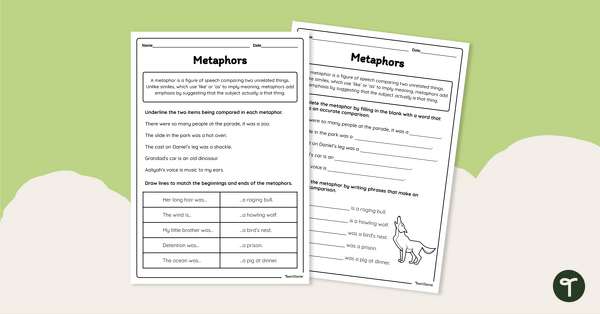
Metaphors Worksheet
Practice identifying and using metaphors with this differentiated metaphors worksheet.
- Free Plan
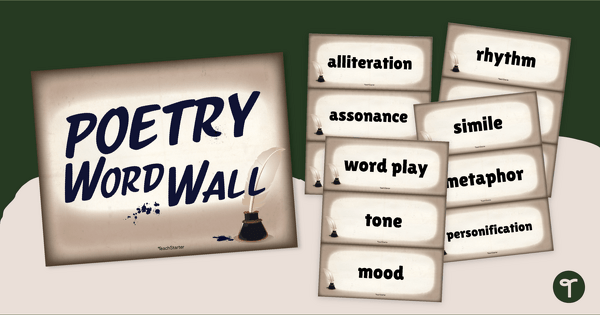
Poetry Terms - Word Wall Display
Display and discuss terms related to poetry and figurative language with a set of 30 word wall cards.
- Plus Plan
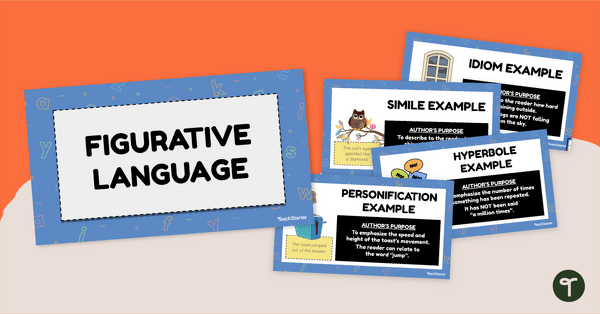
Figurative Languages Lesson - Slide Deck
Teach figurative language using our comprehensive instructional slide deck and accompanying activities.
- Plus Plan
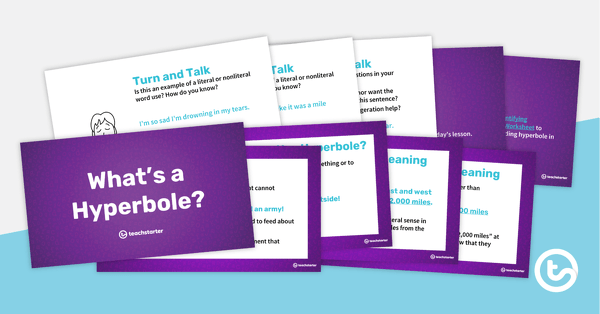
What's a Hyperbole? PowerPoint
An editable 20-slide PowerPoint to use when teaching your students about hyperbole.
- Plus Plan

Text Structures Sorting Activity
A set of 24 text structure cards to use in a sorting or scoot activity.
- Plus Plan
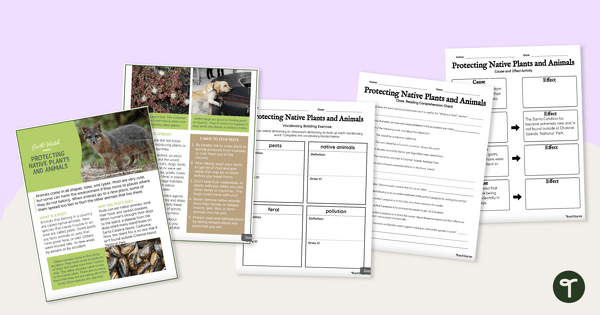
Protecting Native Plants and Animals – Comprehension Worksheets
Build comprehension skills and learn about human impact on ecosystems with a reading passage and worksheets.
- Plus Plan
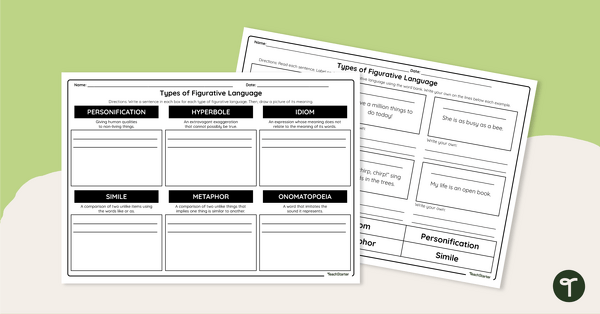
Types of Figurative Language - Worksheet
Practice identifying and creating examples of figurative language with this printable worksheet.
- Plus Plan
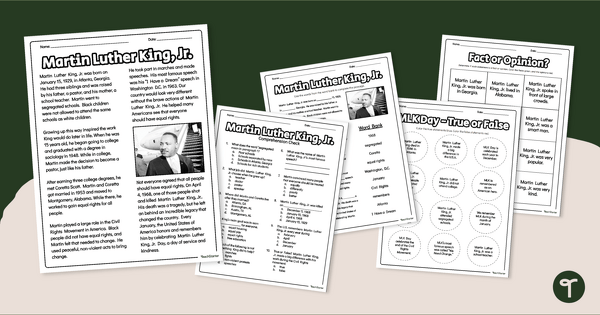
Martin Luther King, Jr. Reading Activity Pack
Apply a range of reading comprehension strategies to learn about Martin Luther King, Jr.
- Free Plan
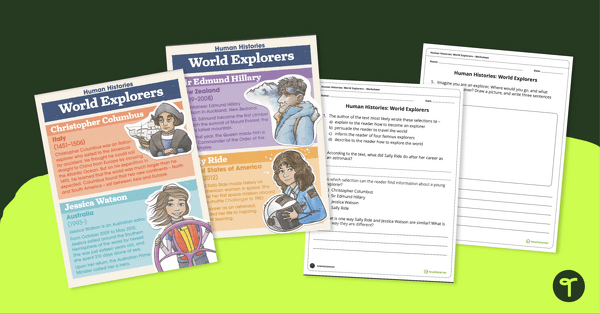
Human Histories: World Explorers – Comprehension Worksheet
A free comprehension worksheet paired with an informational text about world explorers.
- Plus Plan
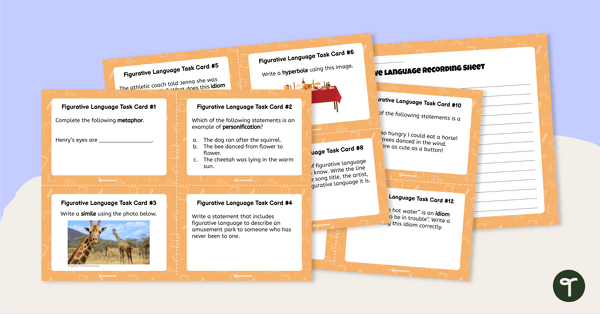
Figurative Language Task Cards
Practice working with figurative language with this set of 12 task cards.
- Plus Plan
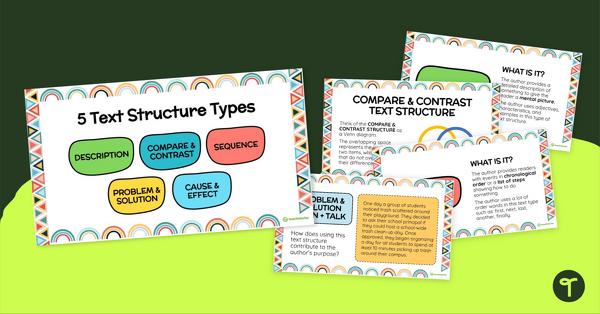
Text Structures Slide Deck
An editable text structure instructional slide deck to use when teaching text structures to your students.
- Plus Plan
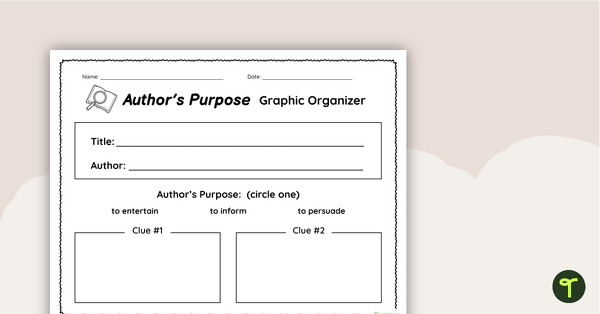
Author's Purpose Graphic Organizer
Organize ideas and context clues that support the author's purpose from your assigned texts.
- Plus Plan
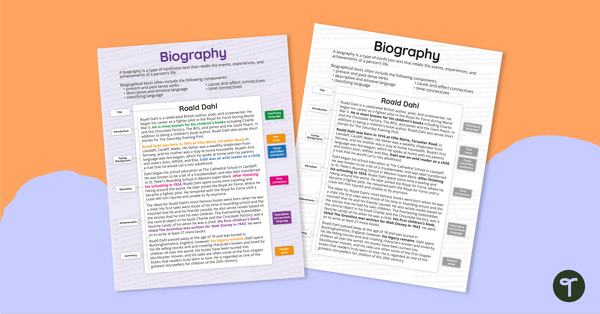
Elements of a Biography Poster
Use this biographical writing poster with annotations to help your students understand how to write an engaging biography.
- Plus Plan
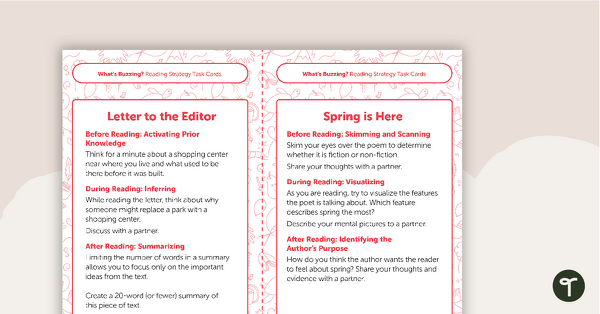
Grade 3 Magazine - "What's Buzzing?" (Issue 1) Task Cards
A set of five literacy rotation task cards to be used in conjunction with issue 1 of Teach Starter's Grade 3 magazine.
- Plus Plan
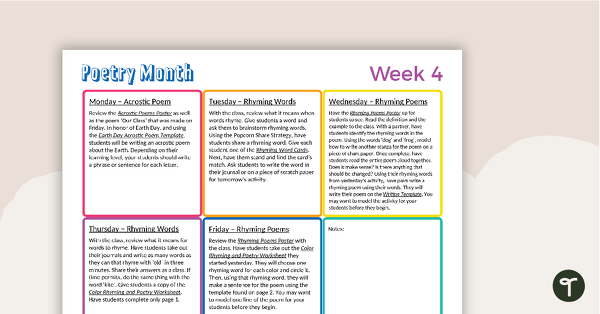
Primary Weekly Poetry Guide - Weeks 4 and 5
Use this weekly poetry guide to celebrate National Poetry Month in your primary classroom.
- Plus Plan

Onomatopoeia Poster
A poster providing a definition and examples of onomatopoeia.
- Plus Plan
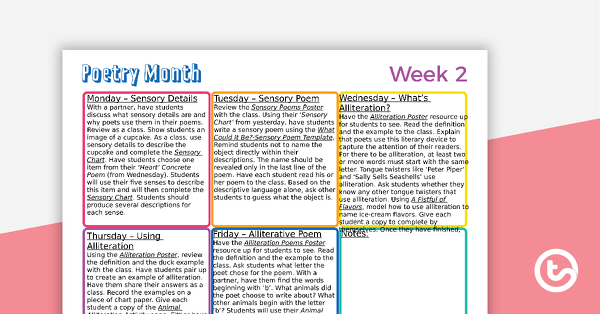
Primary Weekly Poetry Guide - Week 2
Use this weekly poetry guide to celebrate National Poetry Month in your primary classroom.
- Free Plan
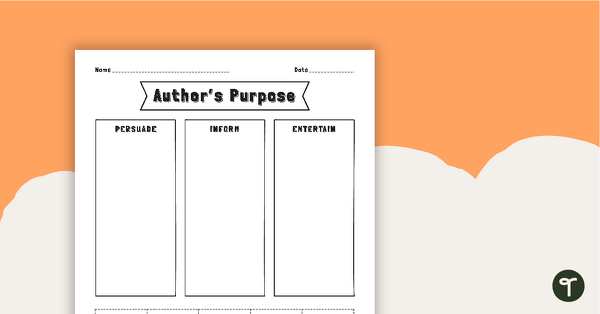
Author's Purpose - Sorting Worksheet
A teaching resource to help teach your students about author's purpose.
- Free Plan
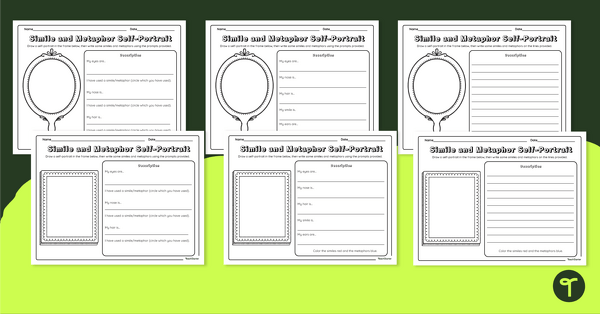
Simile and Metaphor Self-Portrait Worksheet
Teach students about similes and metaphors by asking them to describe... themselves!
- Plus Plan
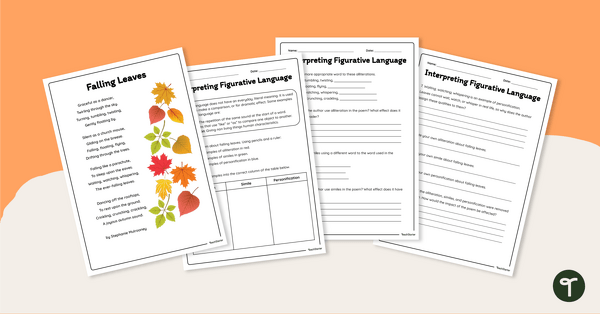
Interpreting Figurative Language - Worksheets
Explore figurative language in poetry with this age-appropriate poem and accompanying vocabulary questions.
- Plus Plan
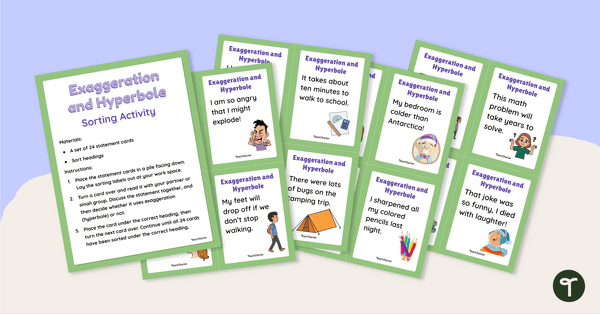
Exaggeration and Hyperbole Sorting Activity
Explore examples of hyperbole with your students using this set of 24 sorting cards perfect for your reading centers.
- Plus Plan
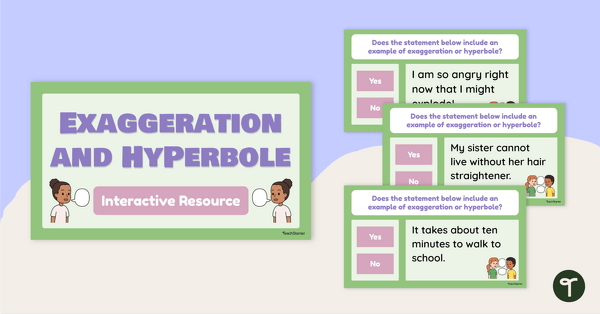
Exaggeration and Hyperbole Interactive Activity
Explore hyperbole examples with your students using this digital game perfect for lesson warm-ups or lesson wrap-ups.
- Free Plan
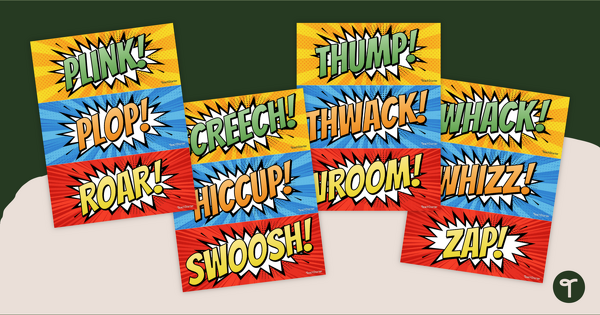
Onomatopoeia Words - Vocabulary Display
Display a fun onomatopoeia word wall in your classroom with printable cards containing onomatopoeia examples.
- Plus Plan
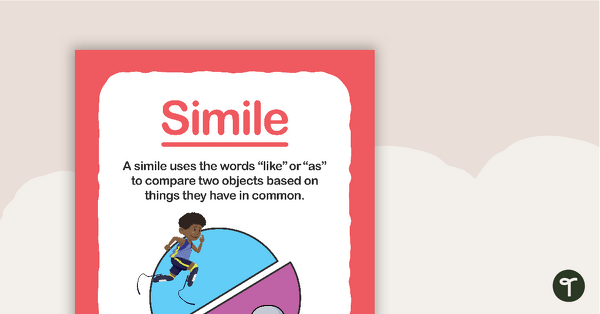
Simile Poster (Primary)
Show your students an example of a simile using this colorful classroom display poster.
- Plus Plan
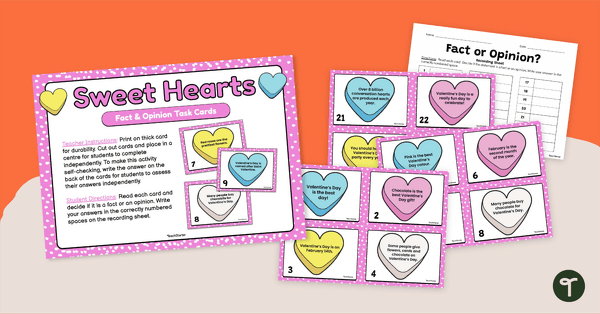
Sweet Hearts Fact and Opinion - Valentine's Day Activity
Practice sweet reading skills on Valentine’s Day with a set of Sweetheart Fact and Opinion task cards.
- Plus Plan
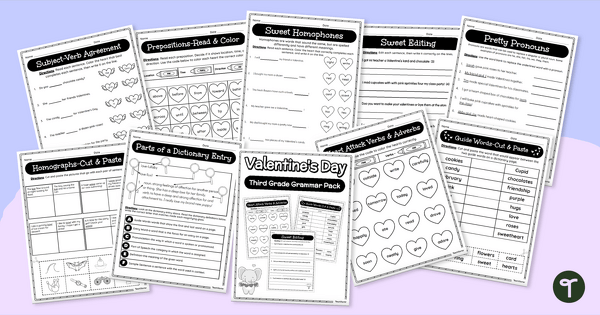
Valentine's Day - 3rd Grade English Worksheets
Review and practice a wide range of grammar skills with a pack of printable 3rd grade writing worksheets.
- Plus Plan
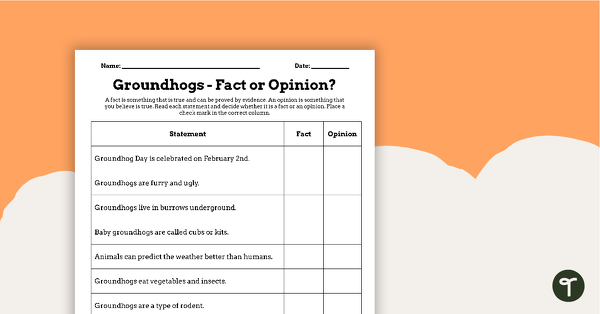
Groundhogs - Fact or Opinion Worksheet
Practice identify facts and opinions with a Groundhog Day worksheet.
- Plus Plan
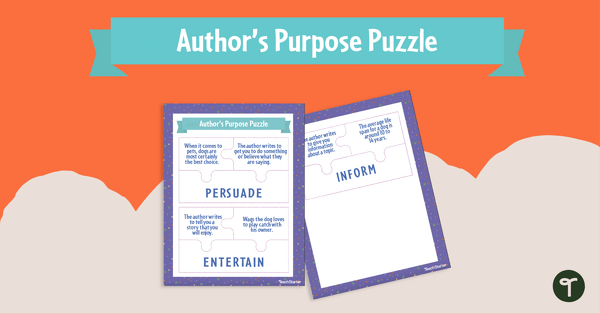
Author's Purpose - Puzzle Activity
A teaching resource to help teach your students about author’s purpose.
- Plus Plan
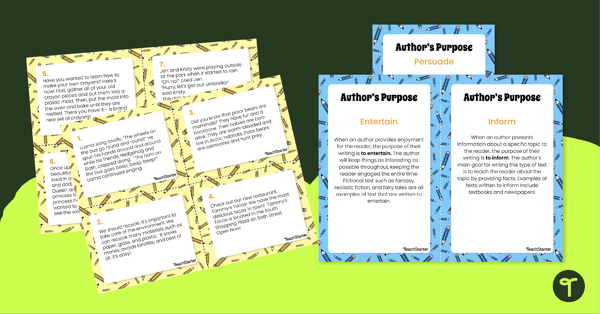
Author's Purpose Sorting Activity
In this author's purpose activity, students will sort 20 phrase cards into groups by identifying whether the text is meant to inform, persuade, or entertain.
- Free Plan
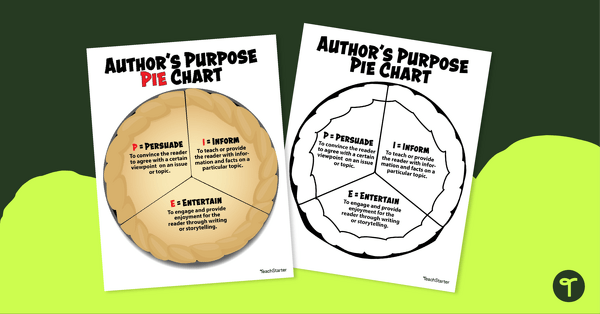
Author's Purpose Anchor Chart
A poster highlighting the three main reasons an author writes a piece of text - to persuade, to inform, to entertain.